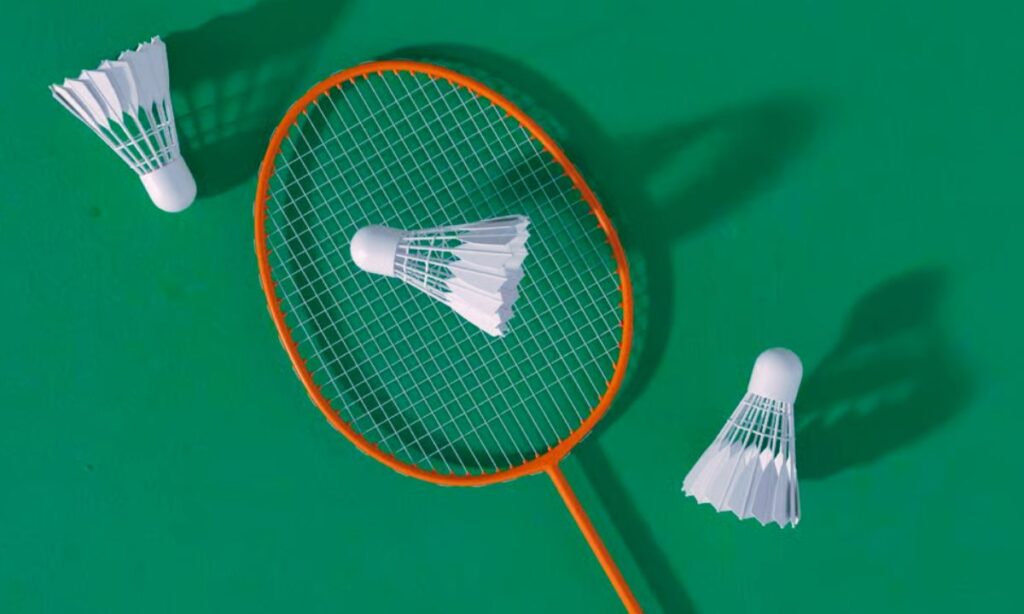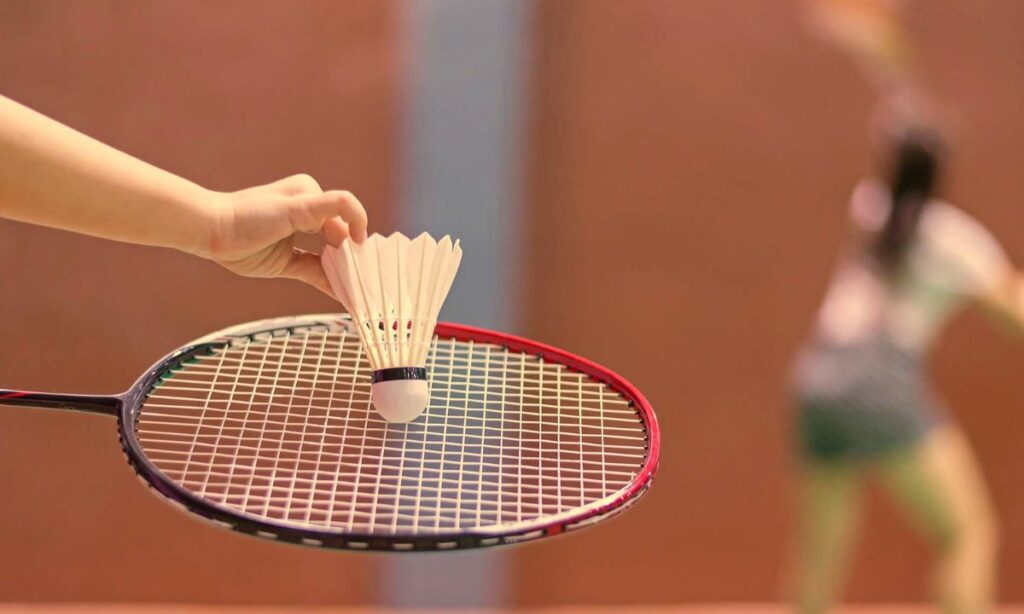
The Complete Guide to Choosing a Light Weight Badminton Racket: For Speed, Control, and Smarter Play
If you’re someone who loves playing badminton—whether you’re just starting out, a weekend warrior, or an advanced club player—you’ve probably heard this phrase tossed around a lot: “Get a light weight racket, it’s better.” But what does that really mean? Why are light weight badminton rackets so popular among players of all levels today? And most importantly, how do you choose the best one for your style of play?
In this article, I’ll walk you through everything you need to know about light weight badminton rackets—from what makes them different to how they can elevate your game. I’ll also recommend some top choices that offer great performance without breaking your wrist—or your budget.
What Is Considered a “Light Weight” Badminton Racket?
Let’s start with the basics.
In badminton, racket weight is categorized using a system that typically includes labels like 1U, 2U, 3U, and 4U:
- 2U = 90–94 grams (heavier)
- 3U = 85–89 grams (medium)
- 4U = 80–84 grams (light)
- 5U = 75–79 grams (very light)
For most recreational and even many competitive players, rackets in the 4U to 5U range are considered light weight.
These rackets are designed to be easier to swing, quicker to maneuver, and generally more forgiving on your joints. While heavier rackets are known for raw power and stability, light weight rackets are all about speed, agility, and reaction time.
Why Choose a Light Weight Racket?
Now that we’ve defined what qualifies as “light weight,” let’s explore why you might want to use one.
1. Faster Swing Speed
In badminton, milliseconds matter. Whether you’re defending against a smash or trying to sneak in a deceptive drop shot, a quick wrist movement can make the difference between a point won and a shuttle in the net.
Light rackets allow you to swing faster and change direction more easily. You can react quicker and transition from defense to attack with far less delay.
2. Less Fatigue Over Long Matches
One of the most underrated advantages of a lighter racket is reduced fatigue, especially during longer rallies or multi-game matches. A heavy racket can tire out your arm, shoulder, and wrist much quicker, leading to sloppy shots and even injury.
For casual players or those who train frequently, using a light weight racket means you can play longer and stay consistent.
3. Better for Beginners and Intermediate Players
Light rackets are more forgiving. They help improve timing, reduce mis-hits, and are easier to control—especially for players who haven’t built up strength or precise technique yet. If you’re learning the ropes or working on your stroke mechanics, a lighter frame helps eliminate strain and bad habits.
4. More Control and Deception
Speed isn’t just about defense. It also opens up a world of deception and finesse. Light rackets allow you to execute quick flick serves, deceptive drops, and fast net play with a lot more ease. For players who prefer a tactical, skill-based game, this type of racket is a smart weapon.
Who Should NOT Use a Light Weight Racket?
While light rackets have many benefits, they’re not for everyone.
If you’re a power-heavy singles player, you may want a heavier racket that helps you generate maximum force on your smashes. Similarly, if you’ve developed excellent wrist and shoulder strength, you may find that ultra-light rackets don’t give you the feedback or stability you need.
That said, many professional players today—including doubles specialists and even some singles stars—use light or mid-weight rackets combined with stiff shafts to get the best of both worlds: speed and precision.
Factors to Consider When Choosing a Light Weight Badminton Racket
So, how do you choose the right one for yourself? Light rackets aren’t all built the same, and picking one randomly could do more harm than good.
Here’s what to pay attention to:
1. Weight Class (4U or 5U)
The lighter you go, the faster the swing. But ultra-light rackets (below 75g) can feel too “hollow” for some players. Most users find a good balance in the 4U (80–84g) range.
2. Balance Point
Even within light weight rackets, the balance can vary:
- Head-Heavy: Better for smashes and power.
- Even-Balance: Good all-round performance.
- Head-Light: Best for speed, defense, and doubles play.
If you’re an attacking player who wants to hit hard with a light racket, go for head-heavy light weight models. If you’re more into finesse and speed, head-light rackets are ideal.
3. Shaft Flexibility
- Flexible Shaft: More repulsion, suitable for beginners or players with slow swings.
- Stiff Shaft: More control, suitable for fast, strong players with precise timing.
Combining a light frame with the right shaft stiffness can elevate your play significantly.
4. String Tension
Light rackets with low string tension offer more power but less control. High string tension offers more control and is suitable for experienced players with refined technique.https://sportglub.com/
Choose your string tension based on your level, not just the racket’s specs.
Best Light Weight Badminton Rackets (Tried, Tested, and Loved)
Here are some popular light weight models across different budgets and player types:

1. Yonex Nanoflare 800
- Weight: 4U
- Balance: Head-Light
- Best For: Advanced players who love speed and net play
This is one of the fastest rackets Yonex has made. Excellent for doubles, especially front-court specialists. Its Razor Frame cuts through the air effortlessly, giving you insane shuttle control.
2. Li-Ning Windstorm 72
- Weight: 5U (around 72g)
- Balance: Even
- Best For: Beginners to intermediates
Super light and easy to handle, this is ideal for new players who want agility without sacrificing power. The aerodynamic frame design makes it a smooth entry into the world of high-performance rackets.
3. Victor Jetspeed S 12 II
- Weight: 4U
- Balance: Head-Light
- Best For: Fast rallies and doubles
Highly popular among doubles players, it offers quick response and excellent repulsion. Great for players who love fast exchanges and quick counterattacks.
4. Apacs Feather Weight X Special
- Weight: Around 69g
- Balance: Head-Heavy
- Best For: Budget-conscious players
One of the lightest rackets on the market. Despite the low price, it offers decent durability and excellent swing speed. Perfect for casual players or learners.
5. Yonex Astrox 22F
- Weight: 4U / 5U
- Balance: Head-Heavy
- Best For: Offensive style with fast racket speed
Combines a light frame with Yonex’s Rotational Generator System to deliver powerful shots without compromising on speed. Great for players transitioning from intermediate to advanced levels.
Mistakes to Avoid When Buying a Light Weight Racket
- Going too light too fast: Don’t just pick the lightest racket. Go with what feels comfortable and stable.
- Ignoring balance: Two rackets can weigh the same but feel completely different based on their balance.
- Buying based on brand only: Big brands offer quality, but there are also hidden gems in lesser-known brands.
- Skipping demo sessions: If possible, try the racket before buying. Your swing style matters more than specs on paper.
Caring for Your Light Weight Racket
Light rackets can be slightly more fragile than their heavier counterparts, especially ultra-light frames. Here’s how to make them last longer:
- Use a padded cover to avoid knocks and scratches.
- Avoid over-stringing beyond recommended tension.
- Store in a cool, dry place—extreme heat or moisture can warp the frame.
- Replace grip regularly to maintain comfort and prevent slipping.
Final Thoughts: Should You Buy a Light Weight Badminton Racket?
If your priority is faster swings, better control, quick net play, and reduced fatigue, then yes—a light weight racket is a smart investment.
It’s ideal for:
- Beginners learning stroke mechanics
- Doubles players who need lightning-fast reaction time
- Seniors or younger players looking to avoid wrist strain
- Intermediate players seeking an all-round balance of speed and finesse
That said, always consider your personal play style, physical condition, and comfort with the racket. Don’t just follow trends—follow what works for you on the court.
Once you find the right light weight badminton racket, you’ll wonder how you ever played without it.

